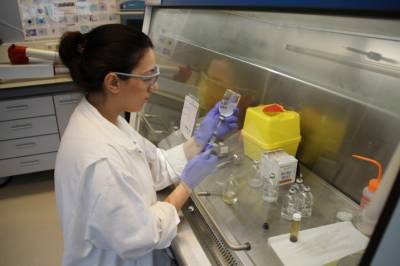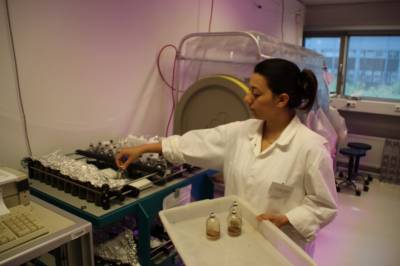
Shokouh Rahsepar, C-IMAGE Student of the Month, October 2014
Shokouh Rahsepar is a PhD student studying the biodegradation of oil with other particles present. She is a student of Alette Langenhoff’s and Martijn Smit’s in the Department of Environmental Technology out of Wageningen University in the Netherlands. She was asked two questions about her research and her daily activities.
Big Picture
1) What is your research project and why is it important and relevant to the GoM?

The aim of my research is to improve our understanding of these individual processes, and specifically the effects it has on the biodegradation of oil in the Gulf of Mexico. The outcomes of this study will improve the decision support system to select the most effective response option at oil spills.
2) What are you doing today?

Today, I am preparing batches to test a selected combination of parameters that play a role in the biodegradation of oil after an oil spill. The parameters that we vary for this experiment are the relative amounts of oil, dispersant and suspended particles. We prepare many different batches to test the effects of the individual parameters and the combination of them on oil biodegradation. Today’s focus are the batches in which aggregates will be formed from kaolin, dispersants and crude oil.
In the coming weeks we will study the effect of these aggregates on the oil biodegradation. We hypothesise that these aggregates will in principle decrease the oil biodegradation rates due to mass transfer limitations (availability) of oil and oxygen. In a real life situation at sea, waves may break these aggregates, and subsequently changing the oil biodegradation, hopefully enhancing it. To mimic the effect of waves, we incubate a series of batches on a shaker and compare the oil degradation with a series that are not shaken.
Thank you, Shokouh!!! Next month we’ll talk to another C-IMAGE student about his/her research… Stay tuned!


